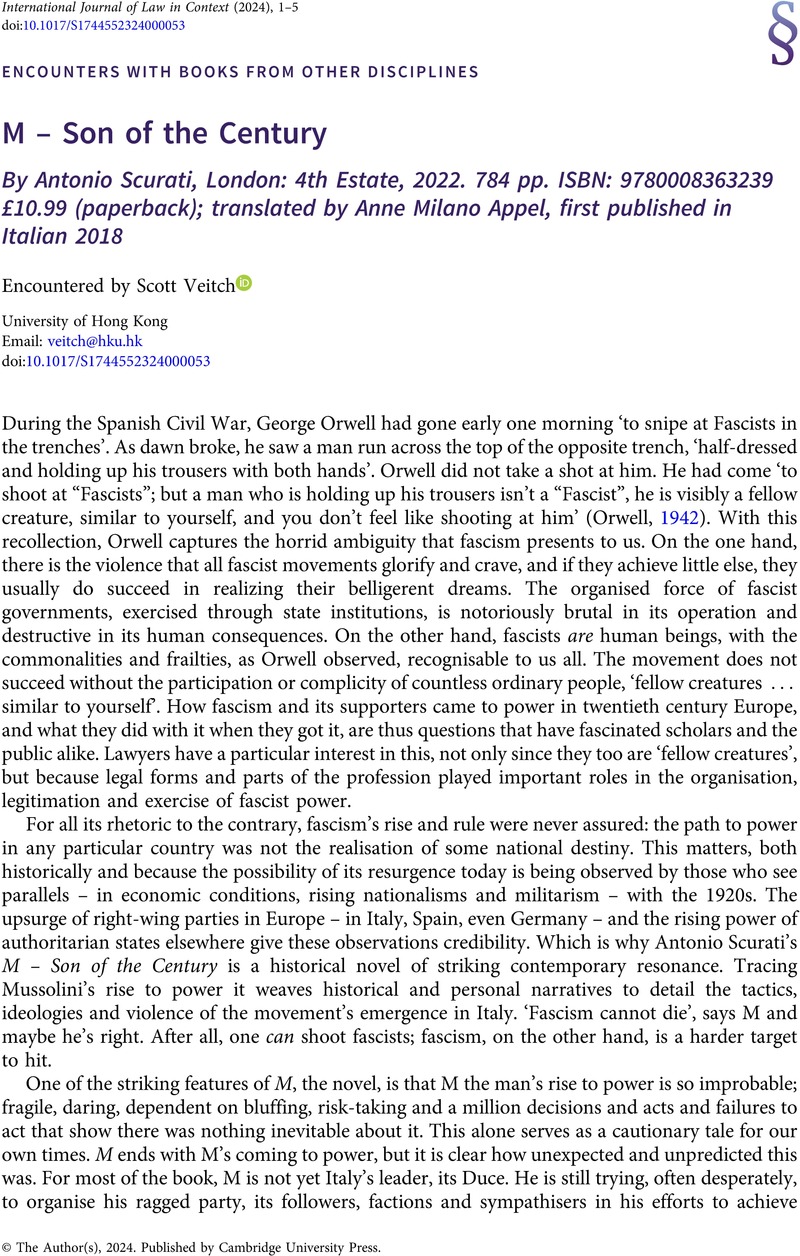No CrossRef data available.
Article contents
M – Son of the Century By Antonio Scurati, London: 4th Estate, 2022. 784 pp. ISBN: 9780008363239 £10.99 (paperback); translated by Anne Milano Appel, first published in Italian 2018
Review products
M – Son of the Century By Antonio Scurati, London: 4th Estate, 2022. 784 pp. ISBN: 9780008363239 £10.99 (paperback); translated by Anne Milano Appel, first published in Italian 2018
Published online by Cambridge University Press: 22 April 2024
Abstract
An abstract is not available for this content so a preview has been provided. Please use the Get access link above for information on how to access this content.

- Type
- Encounters with Books from Other Disciplines
- Information
- International Journal of Law in Context , Volume 20 , Special Issue 3: Populism and Right-Wing Legal Mobilization in Europe , September 2024 , pp. 423 - 427
- Copyright
- © The Author(s), 2024. Published by Cambridge University Press
References
Fraenkel, E [1941] (2017) The Dual State: A Contribution to the Theory of Dictatorship. Oxford: Oxford University Press.CrossRefGoogle Scholar
Guattari, F (2007) Everybody Wants To Be a Fascist. Available at: https://www.revue-chimeres.fr/IMG/pdf/everybody-wants-to-be-a-fascist.pdf.Google Scholar
Latour, B (2009) The Making of Law: An Ethnography of the Conseil d’Etat. Oxford: Polity.Google Scholar
Orwell, G (1942) Looking back on the Spanish War. Available at: https://www.orwellfoundation.com/the-orwell-foundation/orwell/essays-and-other-works/looking-back-on-the-spanish-war/.Google Scholar
Orwell, G (1944) What is Fascism? Tribune. Available at: https://www.orwell.ru/library/articles/As_I_Please/english/efasc.Google Scholar
Prezioso, S (2022) Fascism was a violent counterrevolution, Jacobin, 29 October 2022. Available at https://jacobin.com/2022/10/m-antonio-scurati-fascism-mussolini-counterrevolution.Google Scholar


